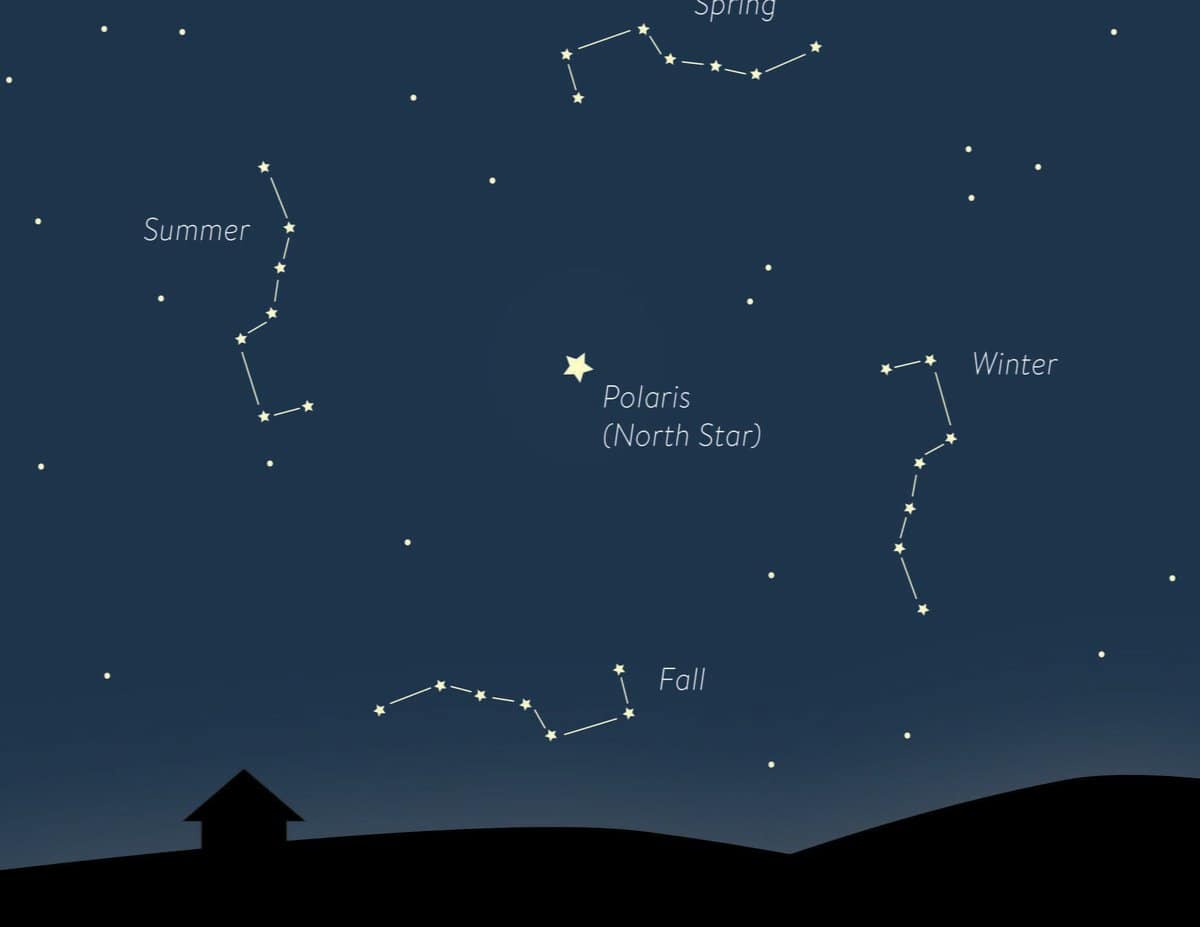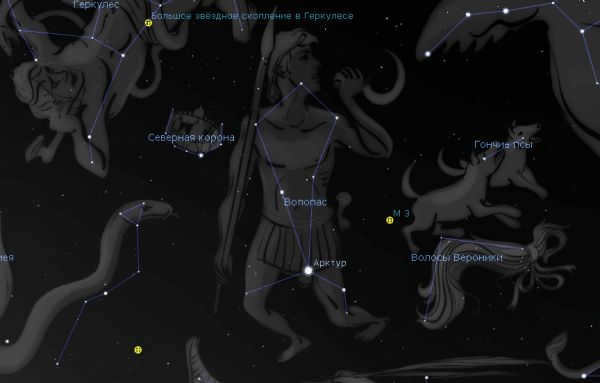
Constellations
The Volopassus constellation can be found in the northern hemisphere and is considered one of the most remarkable constellations. Its name translates to “shepherd” or “plowman”. This celestial wonder was officially recognized by Ptolemy in the second century. Arcturus, the third brightest star, is part of the Volopassus constellation.
Unique Features
The Volopassus constellation holds the thirteenth position in terms of size, covering an area of nine hundred and seven square degrees. It is situated in the third quadrant of the sky. In close proximity to it, there are numerous well-known celestial bodies, including the Dragon, Snake, Virgo, Hound Dogs, and the Big Dipper, among others.
The Magpus constellation is home to five star systems that possess their own planets. Among them, Arcturus stands out as the third brightest star in the entire universe.
Volopassus is a constituent of the Big Dipper, along with other breathtaking constellations.
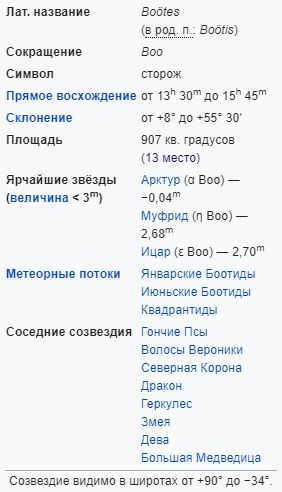
Unique characteristics of the Volopassus constellation
According to ancient legends, the Volopassus constellation depicts a youthful figure accompanied by a pair of canines on leashes. In the vast expanse of the celestial realm, this figure traverses the sky atop the well-known constellation, the Big Dipper.
There exist numerous captivating myths that shed light on the enigmatic nature of the Volopassus constellation. One such myth recounts the tale of a diligent farmer who plowed the land with his trusty oxen, journeying alongside them through the vast expanse of constellations. His loyal canine companions, known as Asterion and Chara, faithfully pursued him as the Hounds. To maintain the orderly rotation of the heavens, the oxen were tethered to the celestial pole.
Many people believed that the young man was Zeus’ son, associating him with Zeus and Callisto-Arcas. He was raised by his grandfather, who wanted to test Zeus by preparing Arcas for a meal. However, Zeus learned of this plan and transformed Arcas into an animal, killing all of his own offspring. As a result, Zeus granted Arcas the gift of life.
The origin of this celestial formation has a complex history. According to one legend, Hera, Zeus’ wife, became enraged by his infidelity and transformed Callisto into a bear. Callisto wandered through the forest for numerous years until she encountered her son, Arkas. Unaware of her true identity, Arkas initiated a hunt. Seeking refuge, Callisto sought shelter in a temple, blocking Arkas’ path. Zeus intervened to aid them and transformed them into two magnificent constellations, depicted as the Big Dipper and Volopas, in the night sky.
According to the final legend, the Magus is credited with the invention of the plow, earning him the admiration of Ceres, who subsequently rewarded him by granting him a place among the heavens.
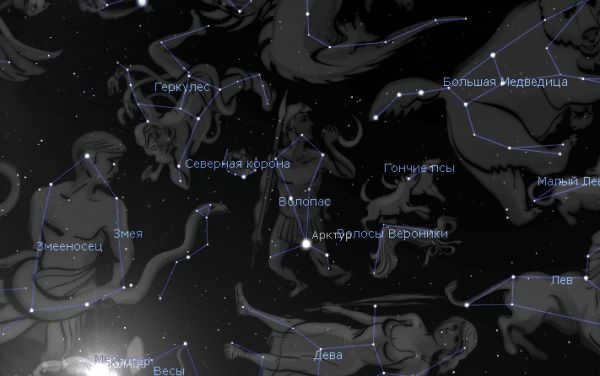
The Magus.
The primary stars
Let’s examine the stars that comprise the Volopassus constellation.
Alpha star – A massive orange star with a unique light spectrum and emission lines. It is situated over thirty-six light years away. The luminosity is one hundred and ten times that of the sun. The star is moving at a velocity of one hundred and twenty-two km/s relative to the Sun. The closest approach to the Sun will happen in four thousand years. This star is the third brightest among all known stars and the brightest in the northern hemisphere. It has a visual magnitude of -0.04.
Arcturus is often ranked as the fourth brightest star in the night sky, coming after Alpha Centauri. This is because Arcturus is actually a binary star, with a combined magnitude of 0.27.
Arcturus is known as the third brightest star in the night sky, following Alpha CentauriA. Its name comes from the ancient Greek words meaning “guardian of the Bear.” It can be found at the left foot of Volopassus, which is near the constellations of Ursa Major and Ursa Minor.
Finding Arcturus is relatively easy. One way to locate it is by looking for the arc of three bright stars that form the handle of the Big Dipper.
Alpha Centauri is also part of the Local Interstellar Cloud, which the Earth and Sun are currently moving through. This cloud has a diameter of 30 light years. Arcturus is considered to be the oldest star in our galaxy’s disk, and it is part of a group of fifty-two other old disk stars known as the Arcturus stream.
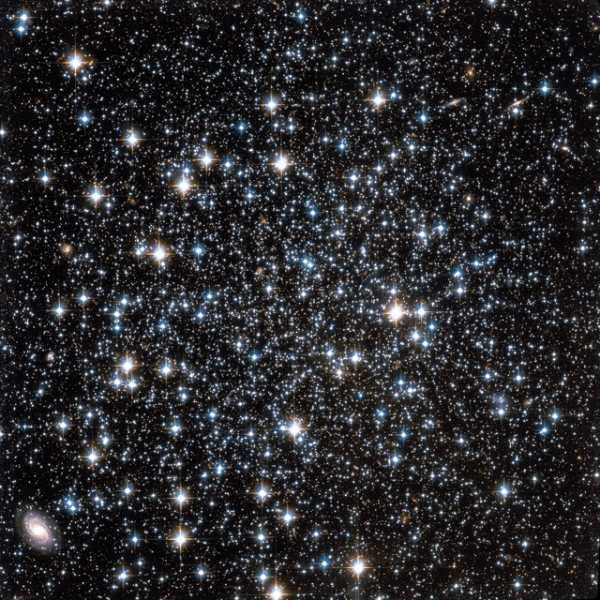
NGC 5466 is situated in the constellation of the Magpies.
Betta star is a massive yellow G-type star, located 219 light-years away. It experiences periodic flares, causing its brightness to increase. Originally, its name was translated from Arabic as “cattle driver,” but due to a small error, it was mistakenly identified as “Nekkar.” Occasionally, the star can also be referred to as “Meres.”
Gamma star is a variable star of the delta shield type. It displays fluctuations in brightness due to radial and non-radial pulsations on its surface. The star is positioned 85 light years away and has dimensions of 3.02-3.07 with a period of 6.97 hours. It falls under the spectral class A7III.
The Epsilon star is a binary star system situated 300 light-years away. It is a brilliant giant star with a vibrant orange hue, serving as the smaller and fainter star in the primary sequence. The star is often referred to as Pulcherrima, which translates to “beautiful.” Additionally, it is commonly known as Izar, derived from the Arabic word for “veil.” Other names associated with this star include Mirak and Mizar.
This particular star is a binary system with a cycle of 494 days. It is positioned in close proximity to Arcturus.
Mu star is a triple star type located at a distance of 121 light-years from our planet. The brightest component of this system is a yellow-white subgiant of the F-type, displaying an apparent visual magnitude of 4.31.
38.Volopasa – A celestial object classified as an F7IVw spectral type, situated at a distance of one hundred and fifty-three light-years. Its name is derived from the Arabic phrase denoting a “chained lady”. It possesses a visual magnitude of 5.74.
A psi star – An enormous star categorized as a K-type, positioned more than two hundred light-years away, exhibiting an apparent magnitude of 4.52.
The tau star constitutes a binary star system. It is characterized as a yellow-white or faint red dwarf.
Celestial bodies in the Volopassus constellation
Let’s explore the primary celestial bodies that can be found in the Volopassus constellation.
- The supercluster, also known as the Great Void, is a spherical region of the sky that contains a minimal number of galaxies. It is located approximately 250 million light years away. This phenomenon was initially identified by expert Robert P. Kirchner over 35 years ago.
- The dwarf galaxy, which bears the same name, is positioned at a distance of one hundred ninety-seven thousand light-years. It is among the dimmest types of galactic formations. It was discovered quite recently in the year two thousand six and its orbital path revolves around the Milky Way. Because of its irregular shape, it gives the impression of being intersected by the Milky Way. The span of this galaxy amounts to seven hundred and twenty light-years.
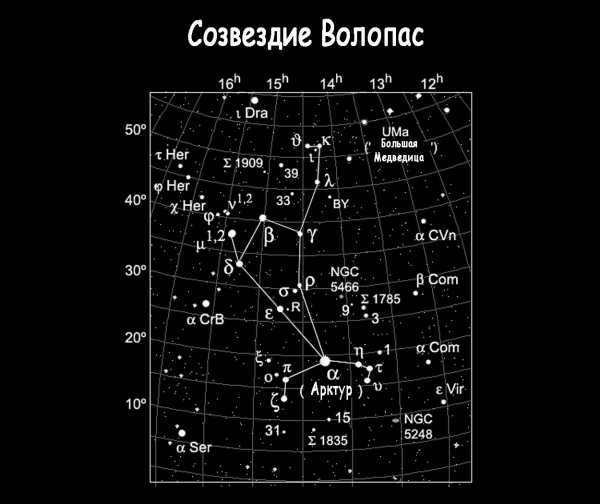
- The constellation Volopassus is visible in the northern part of the sky. It is a stunning constellation that stands out with its brightest stars, forming a beautiful fan shape. At the handle of this fan is a red star named Arcturus.
- Within the constellation’s arrangement of stars, there is a depiction of a man holding a stick in one hand and leashes in the other, restraining the dogs that are part of the Big Dipper.
If the night is without a moon and the sky is completely clear, you can observe around 90 stars in the Volopassus constellation without the need for any optical devices. These stars are generally not very bright, with only eight out of the total 90 having a magnitude greater than four. By connecting these stars, you can form an elongated polygon shape, with the topmost point being occupied by Arcturus, the third brightest star in the entire sky.
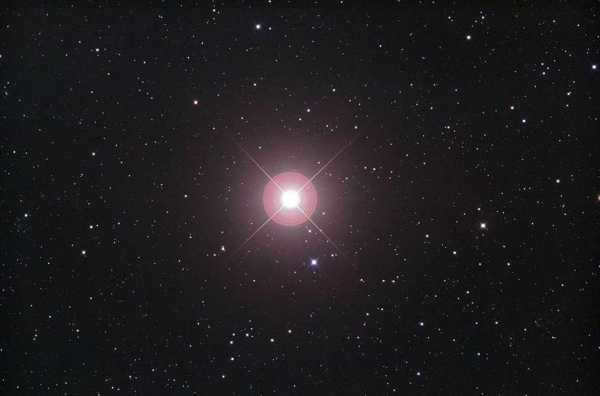
Arcturus, also known as α of Volopassus, lies at a distance of 36 light-years from the Sun. The luminosity of Arcturus is 107 times greater than that of our own Sun. What sets this luminous celestial body apart is its remarkable speed as it traverses the night sky. Arcturus moves at a faster rate than most other stars in the sky. Over a span of 1600 years, diligent observations have revealed that this brilliant and mobile object has shifted by one degree, equivalent to approximately two lunar diameters.
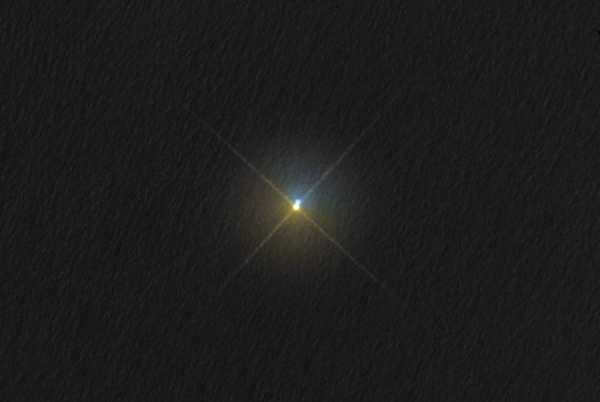
Epsilon of Volopassus is a binary system consisting of a primary star with a luminosity of two stellar magnitudes and a secondary star with a brightness of five stellar magnitudes. When observing this celestial duo, one can witness an indescribable and awe-inspiring spectacle. The primary star emits a brilliant yellow glow, while its companion radiates a mesmerizing shade of green. Together, they resemble two precious diamonds adrift in the vast expanse of the night sky. Such a captivating sight is truly captivating and difficult to divert one’s gaze from.
Meteor showers
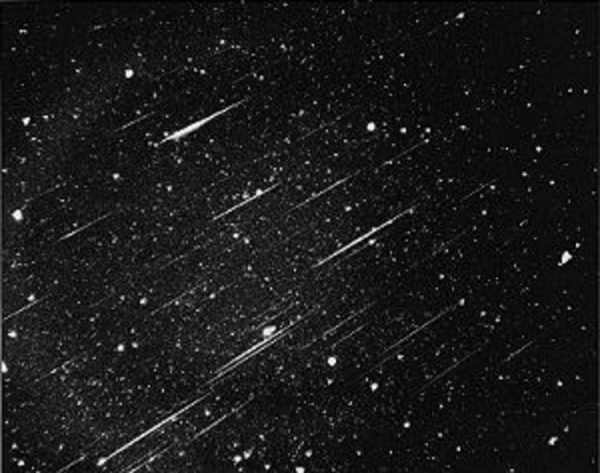
The Quadrantids meteor stream is located near the Volopassus Delta. This stream can be seen from January 1st to January 6th. The peak of activity occurs on January 4th and produces around forty meteors per hour.
Volopassus is considered to be one of the most ancient constellations in existence. It was officially recorded in the renowned Almagest star catalog, which documents the celestial wonders of the night sky.
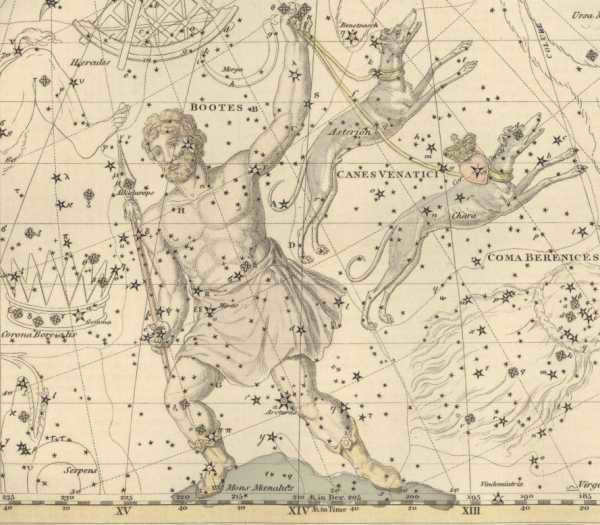
Image from an ancient book
The star Arcturus became the first celestial object visible during daylight thanks to a telescope, as discovered by astronomer Morin de Villefranche in 1635. Later, the renowned astronomer and scientist Galileo also observed its relative motion across the sky, with a speed of 120 km/sec, after 83 years.
Triptolemus, known as the first agriculturist, is depicted in ancient mythology as Wolopassus. He shared his knowledge of agriculture and its wisdom with humanity, and in return, the gods honored him with a place in the sky as a constellation.
The constellation Volopassus is characterized by 3 prominent stars (with a magnitude of less than 3) – Arcturus (-0.05 m), Isar (2.50 m), and Mufrid (2.65 m). Nearby constellations that can be used as reference points in the night sky include Canes Venatici, Coma Berenices, Corona Borealis, Draco, Hercules, Serpens, Virgo, and Ursa Major. In astronomical literature, Volopas is often abbreviated as Boo. Its full Latin name is Bootes.
Background
The history of Arcturus is quite fascinating. In 1635, the renowned French astronomer Morin de Villefranche made a groundbreaking discovery – he became the first person to observe this star with a telescope during daylight hours. This was a significant achievement, as it opened up new possibilities for astronomical research.
Another notable milestone in Arcturus’ history occurred in 1717 when Galileo made an important observation about its motion in space. He discovered that Arcturus had a distinct motion, moving at a rate of 2.3 angular seconds per year. This motion equates to a staggering speed of 120 km/sec.
Interestingly, in Hevelius’s atlas, the maps depicting Arcturus and other celestial bodies were presented in a unique way. Unlike other editions, Hevelius chose to mirror the images, giving the impression that the observer was peering at a transparent celestial sphere from the outside. This artistic decision added a touch of intrigue to his work.
The Tale of the Volopassus Constellation
Behold the wondrous constellation known as Volopassus, which bears the likeness of a shepherd accompanied by his trusty staff and two loyal hounds. The true origins of this celestial marvel’s name remain shrouded in mystery, yet it is entwined with a myriad of fascinating myths. One such legend recounts the tale of Volopassus, a humble shepherd who tended to his herd, bound to the polar axis within the magnificent constellation of the Big Dipper. Alongside him, his faithful canines from the constellation of Hound Dogs dutifully guarded the flock. Other tales intertwine Capricorn with Atlas due to their close proximity to the steadfast polar star. Additionally, it is whispered that Volopassus bestowed upon the world the gift of the plow, thus earning his well-deserved place among the heavens.
Volopas is sometimes associated with the tale of the Great Ladle and Arcas, the offspring of Zeus and Callisto, who was nurtured by his maternal grandfather Lycanus. During Zeus’ visit to Lycanus, the latter dispatched his son to serve the deity at supper to ensure his true identity. In response to this, Zeus, in a fit of rage, transformed Lycanus into a wolf. In the meantime, Callisto, Arcas’ mother, was transformed into a bear by Zeus’ envious wife Hera. Unaware of her true identity, Arcas immediately pursued her in the woods. Zeus, however, determined that she should be placed among the heavens alongside his son. Thus, they became the Great Ladle and the Wolf.
According to another Greek myth, Volopas is identified as Ikarus, who was a winemaker that Dionysus, the god of wine, taught how to make wine. When Dionysus and his friends tasted the wine, they became so drunk that they mistakenly believed they had been poisoned and ended up killing Ikarus. In his despair, Ikarus’ daughter Erigona was brought to his body by his loyal dog Maher and she ended up hanging herself. Overwhelmed by grief, Maher also died. As a result, Zeus transformed them into constellations: Ikarus became the Magus, Erigona became the constellation Virgo, and the dog became either the Big Dog or the Little Dog, depending on the version of the myth.
Chinese myth
China also had its own myths surrounding the creation of various constellations in the heavens. One such myth is that of the Magpie and the Weaver constellation. According to the myth, a talented weaver named Zhi Nyu resided on the eastern bank of the Silver River, which is said to be the Milky Way. Zhi Nyu would skillfully weave fluffy clouds on her loom. While there were other fairies present, Zhi Nyu was considered the most remarkable among them all.
The primary celestial bodies in the Volopassus constellation
Arcturus
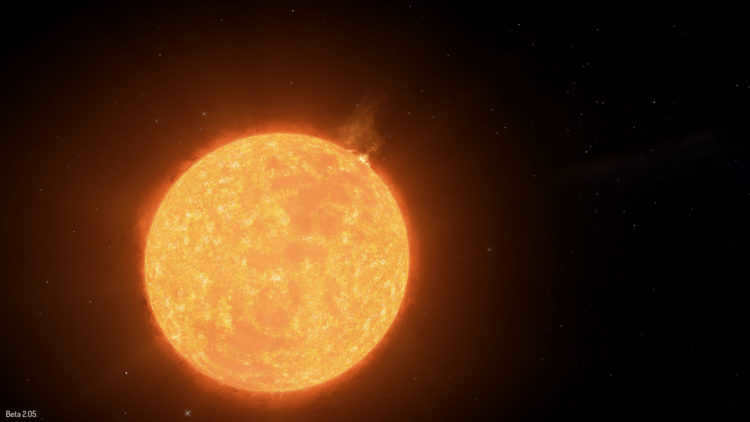
Arcturus (Alpha Volopassus) is a type K1.5 IIIpe orange giant with an unusual light spectrum and the presence of emission lines. It is located 36.7 light-years away and has a luminosity that is 110 times greater than that of the Sun. It moves at a speed of 122 km/s relative to the solar system. In approximately 4000 years, it will make its closest approach to the Sun.
Arcturus is the third brightest star in the sky and the brightest star in the northern hemisphere. It has an apparent visual magnitude of -0.04. It is sometimes considered the fourth brightest star, ranking after Alpha Centauri, because it is a binary star with a combined magnitude of -0.27.
Seginus
Seginus, also known as Gamma Volopassus, is classified as a Shield delta variable star. This means it experiences changes in brightness caused by both radial and non-radial pulsations on its surface. Seginus is situated approximately 85 light-years from Earth. Its magnitude fluctuates between 3.02 and 3.07 over a period of 6.97 hours. Seginus belongs to the spectral class A7III.
Mufrid
Alcalurops
Merga
Nadlat
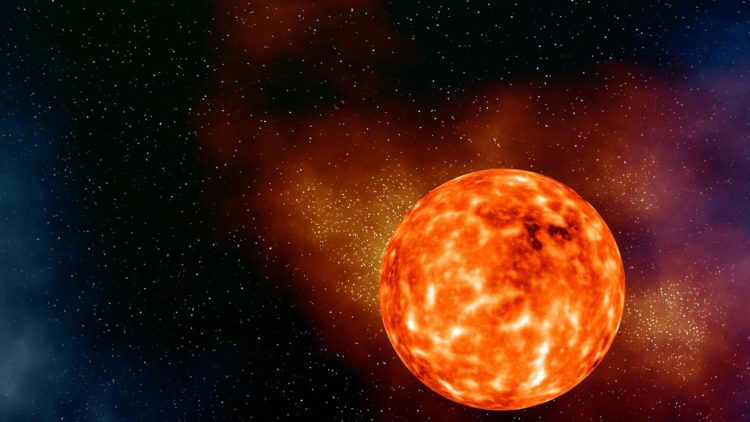

Nadlat, also known as Psi Volopas, is an orange giant star of the K-type. It is located at a distance of 250 light-years. The star has an apparent magnitude of 4.52.
Star Τ in Volopas Constellation
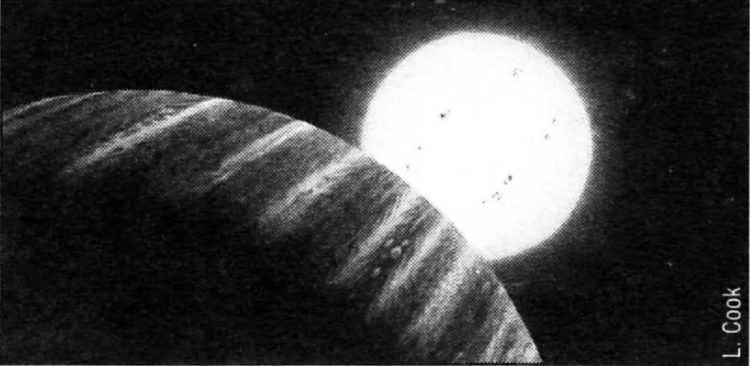
Tau Volopas, also known as Τ Volopasa, is a binary star system located 51 light-years away. It consists of a yellow-white dwarf star and a dim red dwarf star. In addition, the yellow-white dwarf star is known to have an exoplanet, which was first discovered in 1996 and later confirmed in 1999.
Celestial objects within the Volopassus constellation
Volopassus I
Rephrase the text to make it unique using the English language while preserving the HTML markup:
Volopassus I

The Volopassus I galaxy, also known as the Volopassus Dwarf Galaxy, is a small spheroidal galaxy located approximately 197,000 light-years away. It is considered one of the dimmest galaxies in existence. With an absolute magnitude of -5.8 and an apparent magnitude of 13.1, it remained undiscovered until 2006. The Volopassus I galaxy follows an orbit around the Milky Way. Its peculiar shape gives the illusion that the Milky Way is intersecting it. Spanning 720 light-years in width, it showcases an intriguing level of distortion.
Meteor showers.
Meteor showers. There is a radiant known as Quadrantid that passes close to the Volopassus Delta. This particular meteor shower can be seen from January 1st to January 6th. The peak of the shower occurs on January 4th and typically produces around forty meteors per hour.
Explore the heavens
If the weather conditions are favorable and the night is without the moon’s glare, you can use the Little Bear constellation as a guide. Volopassus is directly beneath it when it reaches its highest point above the horizon. This constellation can be easily observed from April to September all across Russia.
Located in the northern hemisphere of the sky is the Volopassus constellation. With its vast expanse of 907 square degrees, it ranks 13th among all other constellations. Naturally, this extensive region is surrounded by several neighboring constellations, including the Big Dipper, Veronica’s Hair, Hercules, the Hound Dogs, Virgo, the Dragon, the Serpent, and the Northern Crown.

It is worth noting that the Volopassus constellation has been recognized since ancient times. Undoubtedly, its expansive region cannot go unnoticed, particularly due to its proximity to prominent and well-liked constellations, which attracts considerable attention and curiosity.
Ptolemy, at one point, included this location in his renowned star catalogue.
Various legends exist regarding the origin of this constellation, with many associating it to Callisto (also known as the Big Dipper) and her son Arcas, who was fathered by Zeus.
As per one account, it is said that King Lycaon, who also happens to be the grandfather of the young man, committed a gruesome act of killing his own grandson and subsequently cooking him as a meal for Zeus. This act enraged the god, leading him to transform Lycaon into a wolf while bringing the grandson back to life in the realm of the living. Nevertheless, Hera, being aware of her husband’s betrayal, retaliated by transforming Callisto into a bear. During a hunting expedition, Arkas, along with his dogs, encountered his mother and began chasing after her. Once again, Zeus intervened and rescued them both by sending them to the heavens.
In another tale, it is told that Icarius acquired the knowledge of winemaking secrets from Dionysus. After successfully creating a batch of wine, Icarius shared it with his friends. Unfortunately, they became heavily intoxicated and mistakenly believed that they were being poisoned, leading them to kill the winemaker in his sleep. In response, the gods elevated him to the celestial realm, giving rise to a new constellation.
The constellations Volopassus and its constituent stars.
The primary star, known as Arcturus, is the brightest in the constellation and is often referred to as the guardian of the bear. It is classified as an orange giant and has an apparent magnitude of -0.4. Interestingly, it is the brightest star in the northern hemisphere and the third brightest star in the entire night sky.
In second place is the star Isar, also known as Epsilon. Its name means “veil” and it is part of a binary system consisting of a giant star and a main-sequence star. Together, they have a combined visual magnitude of 2.37.
Occupying the third position is the star Mufrid with the designation This in the constellation Volopassus. Its name translates to “distant from man” and it has a luminosity of 2.68. It is sometimes referred to as Saak. This star is a spectroscopic double and has a distinct yellow-white color.
There is a blue giant star that comes after. Gamma — Seginus has a magnitude of 3.03. It is classified as a type of variable Delta Shield.
Delta is a double star. Its apparent value is 3.48.
Beta — Neckar means digger. It is a yellow-white colored variable giant star with a visual magnitude of 3.49.
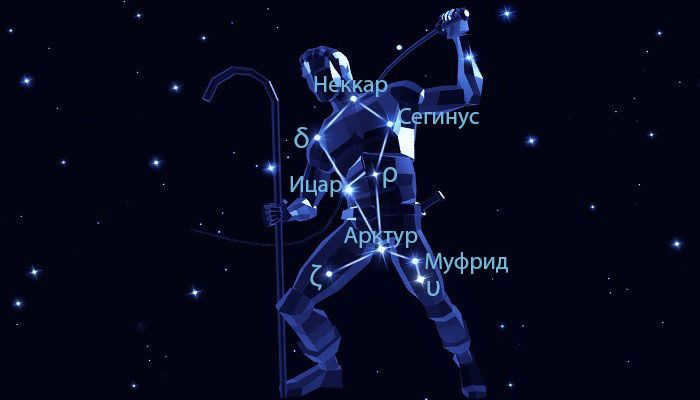
The dwarf star Sigma has a yellow-white color and a visual magnitude of 3.52.
The orange giant Ro Volopasa has a brightness of 3.58.
The double systems Zeta, Tau, and Xi have apparent magnitudes of 3.78, 4.50, and 4.70, respectively.
The subgiant star Theta is blue-white in color and has a luminosity of 4.05. It is known as the first donkey in the plot.
The orange giants Ypsilon and Psy (also known as Nadlat) have stellar magnitudes of 4.05 and 4.52.
The white dwarf star Lambda has a luminosity of 4.18.
Kappa and Iota are subgiants of a bluish color and have magnitudes of 4.54 and 4.75, respectively. They are referred to as the third and second donkeys.
The star 38 Volopasa, also known as Merga (which translates to “chained woman”), is a blue-white subdwarf with a visual magnitude of 5.76.
The constellation Volopassus is easily noticeable in the night sky due to its bright stars.
What celestial objects are present in the constellation Volopassus?
While the constellation Volopassus covers a significant area, it does not contain any Messier objects. However, it does feature the fascinating Volopassus Supergroup, often referred to as the Great Void of Volopassus. This term does not imply literal emptiness, but rather a small number of galaxies, approximately 60 in total.
In addition to the Volopassus Supergroup, the constellation also contains the dwarf galaxy Volopassus I. This galaxy has a spheroidal shape and is very faint, making it difficult to observe. Despite its proximity to the Milky Way, it was only discovered in 2006 due to its dimness.
An interesting feature within the constellation is the globular cluster NGC 5466. Recently, a Tidal Stream, which is a line of stretched stars, was discovered within this cluster.
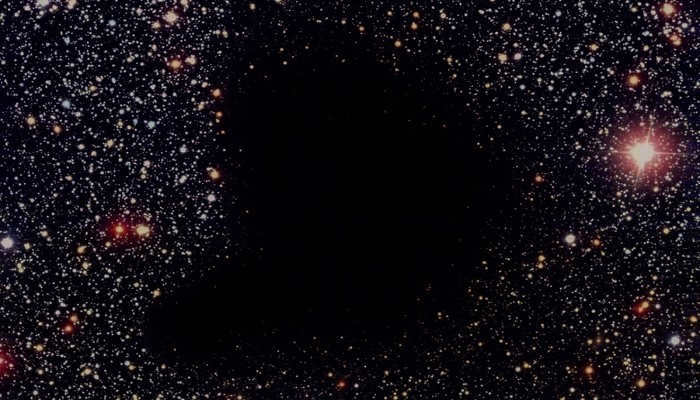
The Kite asterism, also known as Eskimo or Parachute, is comprised of six prominent stars in the region. Another star group, called the Trapezoidal Asterism, is visually associated with it. The name of this asterism is believed to have been given due to its irregular quadrilateral shape.
Additionally, this site is known for its meteor streams, including the January Boothids, June Boothids, and Quadrantids.
Observation
The constellation Volopassus can be observed from any location in Russia, as it is visible at a latitude range of +90 to -34. It is important to note that the optimal time for observation is during the late spring and early summer.
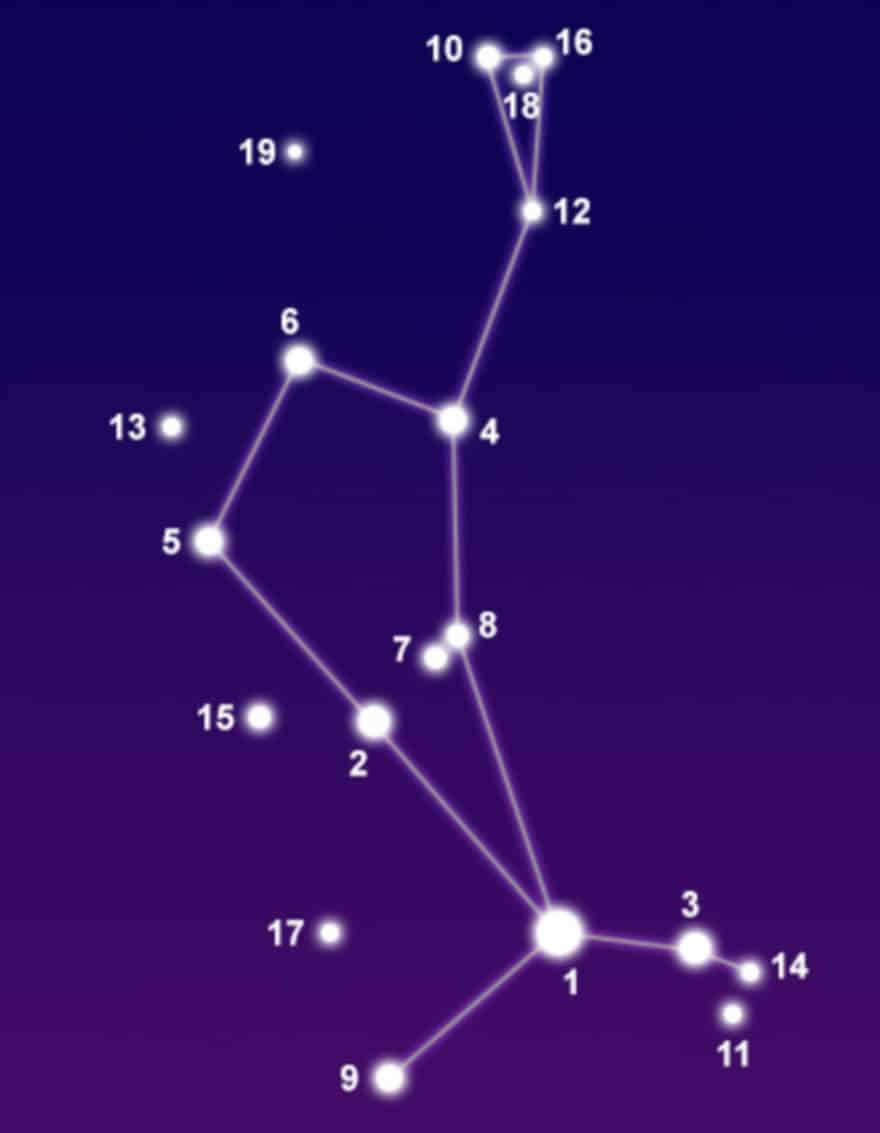
Fascinating Information, Location, and Map
The constellation Volopassus is an expansive constellation spanning 907 square degrees, making it the thirteenth largest in the night sky. Positioned in the third quadrant of the northern hemisphere (NQ3), it can be observed in latitudes ranging from +90° to -50°. Volopassus shares its celestial surroundings with neighboring constellations such as the Serpent, Hercules, Dragon, Northern Crown, Veronica’s Hair, Hound Dogs, Virgo, and the Big Dipper.
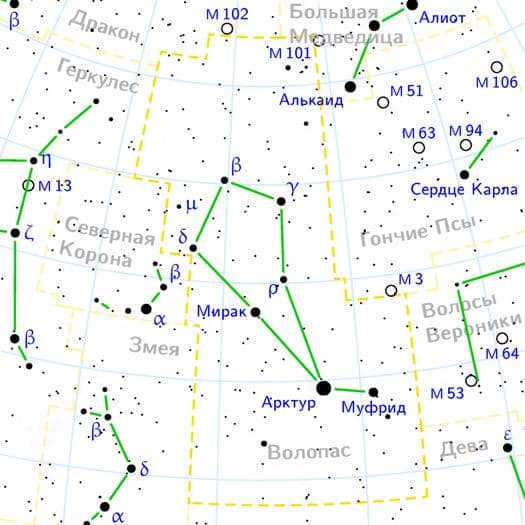
Traditionally, the Volopassus constellation portrays a youthful man encircled by two hunting canines on a leash and a club. In the heavens, he journeys alongside the Big Dipper around the pole. Numerous tales exist that depict the figure of Volopassus. He was a plowman who herded oxen around the Big Dipper. His dogs, Asterion and Chara (Hound Dogs), always trailed behind him. He fastened the oxen to the polar axis, thus ensuring the continuous rotation of the heavens.
On many occasions, the son of Zeus and Callisto, Arkas, appeared in his form. He was raised by his grandfather, Lycaon, the king of Arcadia, who once decided to test the deity and prepared Arkas for his meal. However, Zeus saw through the king’s scheme and transformed him into a wolf, killed all of his sons, and resurrected his own offspring.
However, the constellation’s history does not end there. Zeus’s wife, Hera, became furious with him due to his infidelity and transformed Callisto into a bear. For years, she roamed the forest until she stumbled upon her son, Arkas. Unaware of her true identity, he began to hunt her. Desperate for safety, Callisto sought refuge in a temple that Arkas could not enter. To aid them, Zeus decided to elevate them to the heavens, where they became the Big Dipper and Volopas.
Another myth revolves around Icarius, who owned vineyards and once invited Dionysus to visit him. Surprised by Icarius’s hospitality, Dionysus decided to share the secret of winemaking with him. Icarius enjoyed the drink so much that he invited all his friends to partake. Unfortunately, the next morning, his friends believed they had been poisoned and in a fit of anger, killed the sleeping Icarius. Deeply saddened by this tragedy, Dionysus immortalized his friend in the heavens.
In the previous narrative, the Magus was the individual responsible for inventing the plow. Ceres rewarded him by sending him to the heavens.
The primary celestial bodies
Let us closely examine the celestial bodies within the Volopassus constellation, providing a detailed depiction and characterization accompanied by photographs.
Arcturus (Alpha Volopas) is an orange giant categorized as type K1.5 IIIpe, featuring an unusual light spectrum and the presence of emission lines. It is situated at a distance of 36.7 light-years, possessing a luminosity 110 times greater than that of the Sun. It moves at a velocity of 122 km/s relative to the solar system. Its closest approach to the Sun is predicted to occur in approximately 4000 years.
Ranked as the third brightest object in the night sky and the brightest within the northern hemisphere, Arcturus holds an apparent visual magnitude of -0.04. Sometimes, it is considered the fourth brightest, trailing behind Alpha Centauri due to its binary nature, resulting in a combined magnitude of -0.27.
Seginus (Gamma Volopassus) is a type of variable star in the Shield delta category that exhibits changes in brightness as a result of pulsations on its surface, both radial and non-radial. It is situated 85 light-years from Earth. The magnitude of Seginus varies between 3.02 and 3.07 and has a period of 6.97 hours. It belongs to the spectral class A7III.
Nadlat (Psi Volopas) is an orange giant of the K type that is located 250 light-years away. Its apparent magnitude is 4.52.
Τ Volopasa (Tau Volopasa) is a binary star system found 51 light-years from us. It consists of a yellow-white dwarf and a faint red dwarf. The yellow-white dwarf is known to have an exoplanet, which was discovered in 1996 and confirmed in 1999.
Celestial objects
Volopassus I (also known as the Volopassus Dwarf Galaxy) is a small spherical galaxy located 197,000 light-years away. It is classified as one of the dimmest galaxies in the universe. With an absolute magnitude of -5.8 and an apparent magnitude of 13.1, it remained undiscovered until 2006. Volopassus I orbits the Milky Way and due to its distorted shape, it gives the impression that the Milky Way is intersecting with it. The galaxy spans a diameter of 720 light-years.
NGC 5466 is a globular cluster situated in the constellation of Wolopas, approximately 51,800 light-years from Earth.
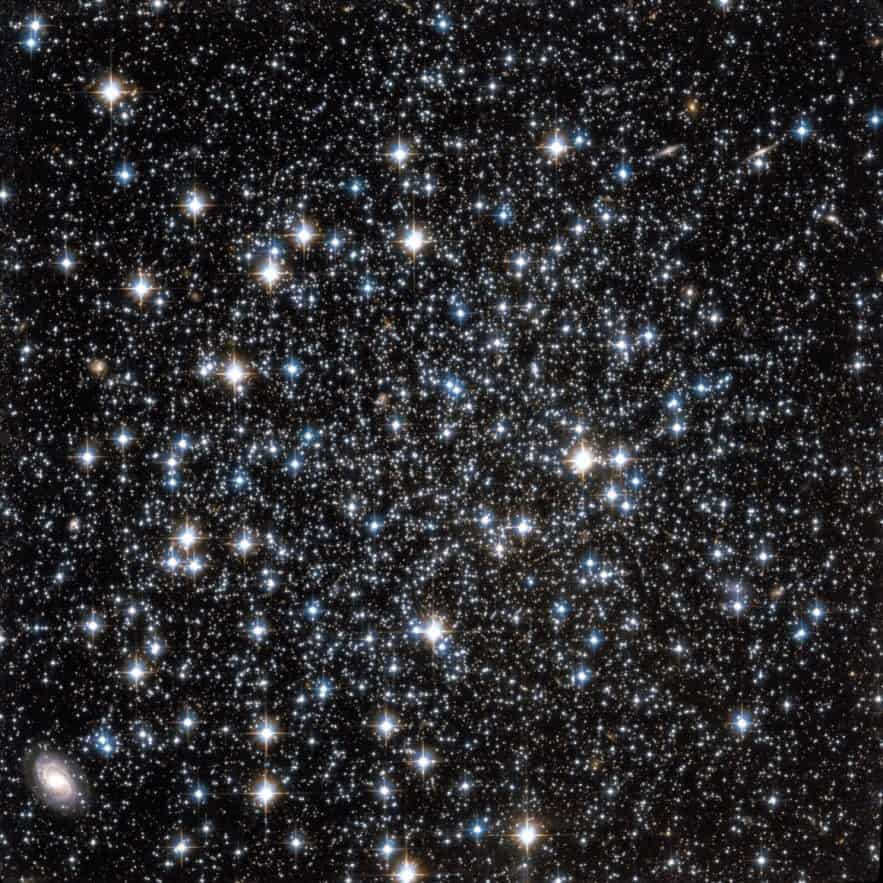
The discovery of NGC 5466 was made by the British astronomer William Herschel in 1784. This globular cluster is located at a distance of 52,800 light-years from the center of the galaxy and is believed to be the origin of the 45-degree Tidal Stream, which was found in 2006. One of the notable features of this cluster is the presence of a blue horizontal branch of stars, and it is also known for its low metal content.
If you want to explore the Volopassus constellation in more detail, you can use not only our photos but also 3D models and an online telescope. You can also use a static or movable star map to conduct your own search.
Without a doubt, there is not a solitary individual on the planet who does not gaze at the heavens during the nighttime hours. The exhibition is enchanting with an array of radiant entities. Some of them are luminous, easily distinguishable against the backdrop of darkness, while others are more subtly noticeable. No location on the globe exists where they would not be observable. Numerous individuals observe their shimmering and perceive the same celestial bodies. They are so incredibly distant from our planet.
Throughout history, they were frequently invoked for assistance. Travelers relied on them to navigate their way back home, and in the realm of agriculture, they were used to determine the optimal time for planting crops. They were even consulted to make predictions about the weather for the following day.
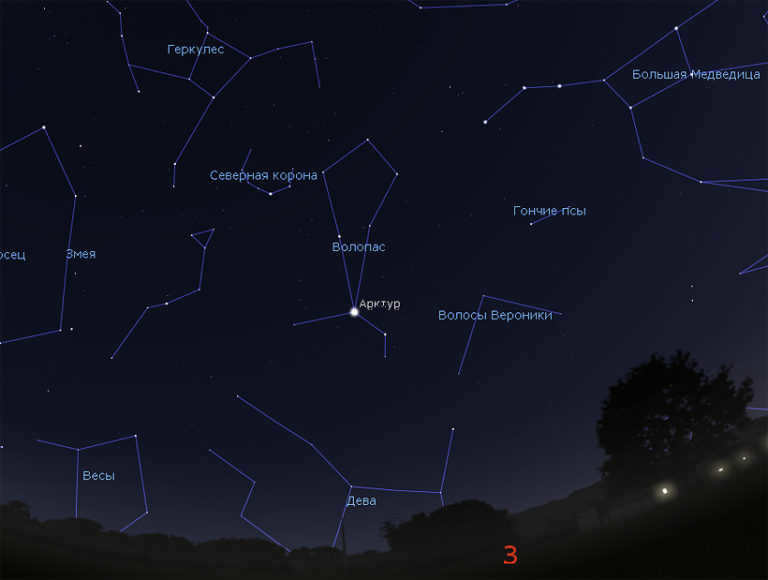
Constellations are groups of bright stars that have been given names by people thousands of years ago. These names hold a special magic and each constellation has its own story to tell.
Myths and Legends of the Volopassus Constellation
There are many legends and myths surrounding the constellation Volopassus in Greek mythology. Some say it represents the image of a plowman or farmer. In ancient times, there was a king in Eleusis who had a son named Triptolemus. The goddess of agriculture, Demeter, wanted to make him a famous mortal, so she gave him the tools of her trade – a plow, a sickle, and an ear of wheat. She taught him how to till the land, sow wheat from the ear, and harvest crops with the sickle.
According to Demeter’s decree, Triptolemus is tasked with sharing the agricultural secrets with the people.
To aid him in his mission, she bestowed upon him a golden chariot pulled by dragons. The fields he cultivated became renowned for their bountiful harvests, and the goddess was revered for her successful endeavors. As a token of appreciation, the gods immortalized Triptolemus by transforming him into a constellation, symbolizing the first plowman. Now, he traverses the heavens, sowing the celestial fields with the assistance of oxen, symbolized by the bright stars of the Big Dipper. In ancient times, the arrival of the Pleiades in the eastern sky after midnight signaled the start of spring preparations in the fields.
There is a fascinating tale to be told, which revolves around the proprietor of grape lands by the name of Ikarius. The renowned god of wine, Dionysus, embarked on a journey across the earth, visiting various inhabited regions. As he traversed these lands, he imparted his knowledge of cultivating grapes and creating wine to the local inhabitants. Everywhere he went, he was met with warm hospitality and joviality. In return for their kind reception, Dionysus generously rewarded the people. One of the fortunate recipients of his blessings was Icarius, who was bestowed with a vine branch and the secrets of winemaking. The taste of the drink left such a profound impression on Icarius that he eagerly called upon his friends to partake in it. However, when the morning arrived and the effects of the drink wore off, the guests mistakenly believed that they had been deliberately poisoned. In a fit of anger, the shepherds took matters into their own hands and killed Icarius, burying him in the mountains. Icarius’ daughter, Erigona, accompanied by her faithful dog Myra, set out on a quest to find her father. After a long and arduous search, they discovered his lifeless body in a mountain ravine. Overwhelmed with grief, the young girl could not bear the weight of her sorrow and chose to end her own life. Witnessing the tragic events unfold, Dionysus was filled with deep sorrow and regret. In an effort to honor the memory of the fallen, he transformed them all into constellations, forever immortalizing them in the night sky. Thus, the constellations Virgo, Big Dog, and Wolopassus came into existence.
China boasts its own myth.
Living on the eastern shore of the Silver River (Milky Way) was a skilled weaver named Zhi New. Amongst the fairies, she was renowned for her beauty, and she would create intricate, ethereal clouds on her loom. Her craftsmanship earned her a reputation far and wide.
On the opposite side of the river lived a man named New Dan, who had an aging ox that he cherished dearly. One day, in a moment of gratitude, the ox spoke to him. The animal revealed the existence of a weaver who would come to the river at the same time each day. If the young man wanted to make this enchanting woman his wife, he would have to discreetly take her clothing. So, one day, the young man waited by the river for the fairy to arrive. She came with her sisters to bathe in the river, undressing and leaving their clothes folded on the riverbank before entering the water. Seizing the opportunity, the young man stealthily took the clothes of his beloved. Startled by the presence of a stranger, the sisters hastily fled, leaving only Ji New behind. New Dan promised to return her clothing if she agreed to marry him. And so, they lived happily ever after. This is the origin story of the Constellations, which now symbolize the eternal love between the weaver and Volopas.
King Lycaon, the ruler of Arcadia, had a stunning daughter named Callisto. The princess’s breathtaking beauty caught the attention of Zeus, the divine ruler of the celestial and earthly realms. He paid a visit to the palace to meet the young lady. Eventually, they became parents to a son, whom they named Arcadus. As he grew older, Arcadus developed into a graceful and attractive young man. He had a passion for hunting and possessed exceptional skill with a bow.
After discovering her husband’s hidden love affair, Hera, his wife, became furious and transformed Callisto into a hideous bear. As his son was returning from a hunting trip, he stumbled upon the bear and prepared to shoot with his bow. However, the god of the sky couldn’t allow this to happen. He swiftly grabbed the bear by its tail and soared into the heavens, leaving her there. In the constellation of Ursa Minor, one can observe the depiction of the girl’s handmaiden. Zeus also carried the son to protect his mother, holding the leashes of the Hound Dogs, ready to attack at any moment.
In 1635, a French astronomer managed to observe this phenomenon during daylight using a telescope. It emitted a brightness one hundred and ten times that of the sun and traveled at a speed of one hundred and twenty-two kilometers per second. In the next four thousand years, it may come closer to the sun.
Arcturus is known as an ancient disk star that journeys alongside fifty-two other similar stars. The movement of Arcturus is often referred to as its motion.
Identifying Arcturus in the night sky is not a difficult task. One can use the three bright stars that form a handle in the Big Dipper as a useful point of reference. Arcturus can be found shining at the left foot of Volopas, standing beside it. While it can be observed throughout the year, it is especially visible during the spring season.
Individuals born under the influence of this star possess a strong determination to prove themselves right to the world. They always speak the truth without fear of consequences. However, they may lack the ability to truly listen to others. Their unwavering pursuit of victory at any cost often leads to the accumulation of numerous enemies.
Not far from Arcturus lies another celestial object known as Izar, which means “veil” in Arabic. When observed through a telescope, Izar appears as a pair of bright stars. One star is an orange-colored giant, while the other is a white dwarf. This stellar duo caught the attention of Strue, a renowned Russian astronomer in the nineteenth century. Izar is located approximately three hundred light years away from Earth and its mesmerizing array of colors can be best appreciated on a calm, windless night.
Another interesting star is Nadlat, an orange giant located two hundred and fifty light years away.
Tau Volopasa is a double star system that consists of a yellow-white star and a faint red dwarf. It is known for its constantly changing magnetic field and is situated fifty-one light years away from our planet. Tau Volopasa shines slightly brighter than the sun and its magnetic cycle lasts for two years.
Additional celestial objects in the constellation Volopassus
At a first glance, it appears that the stars are evenly scattered throughout space. However, this is not the case. They are actually all gathered in galaxies, which are relatively close to each other. The empty space only exists in small pockets. Nevertheless, there is an exception to this pattern.
There is a void or empty space that is located seven hundred million light years away from Earth in the direction of the Volopassus constellation.
In 1981, Professor Robert P. Kirchner of Harvard College discovered a spherical area of the sky where a limited number of galaxies were positioned. This void was situated within the Volopassus constellation. The estimated diameter of the void was three hundred and thirty million light years.
Sometimes referred to as a supervoid due to its immense size, it is considered one of the largest voids in existence. Situated approximately seven hundred million light years away from the Sun, its center holds a significant distance.
In 1989, the scientific community announced the discovery of fifteen galaxies within this supervoid. By 1997, this number had increased to sixty, revealing the expansive nature of this cosmic void.
Known as the Great Void of Volopassus, this vast expanse of empty space has perplexed scientists for four decades. Various hypotheses have been proposed to explain its origin, including the notion that smaller galaxies merged together to form this colossal void.
Renowned scientist Olding likened this process to soap bubbles merging to create one giant bubble. Countless theories and speculations have emerged over the years, shedding light on the enigmatic nature of this cosmic void. This discovery has revolutionized astronomers’ understanding of galaxy formation.
The universe is infinite, and within its vast expanse, our place is minuscule. However, this fact does not hinder our ability to marvel at the celestial beauty that surrounds us.
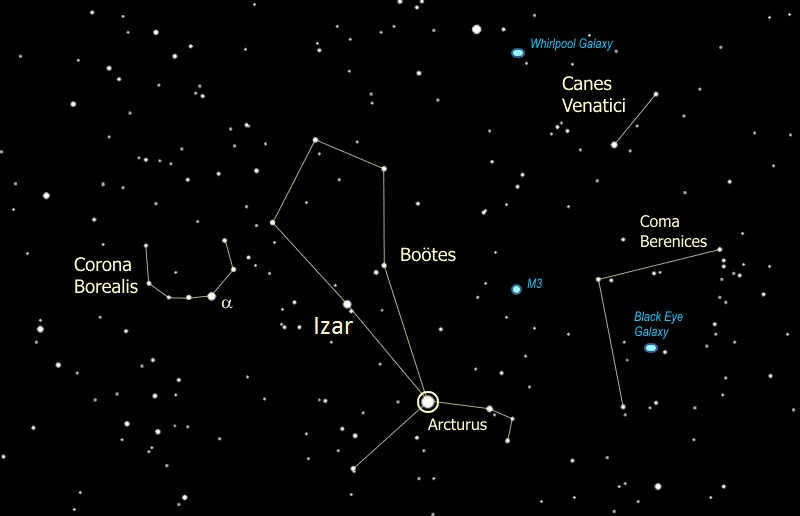
Discovered by British astronomer William Herschel in 1784, the constellation Sage is home to a globular cluster. Situated fifty-one thousand eight hundred light years away from Earth, it is renowned for its stellar flux. Despite its lack of metals, it features a blue horizontal branch of stars.
Known as a meteor stream, the Quadrantid passes near the delta of Volopas. It is most easily observed in the early days of January, with its peak occurring on the fourth day. During this time, up to forty meteors can be seen per hour.
Discovering the Volopassus Constellation in the Night Sky
During a clear night with optimal visibility, we can easily locate the Volopassus constellation by using the Little Bear as our reference point. Once the Little Bear reaches its peak position above the horizon, the Volopassus constellation becomes visible just below it. This celestial phenomenon is particularly prominent in Russia, where it can be observed from spring until fall.

The myth surrounding the constellation Volopassus centers around Treptolus, the first farmer in history. Treptolus, the son of King Keleus and Metanira, was chosen by the goddess of fertility and agriculture to be the most esteemed among mortals. Instead of becoming a ruler like his father, Treptolus dedicated his life to farming and became an expert in plowing the land and sowing seeds, as well as mastering the secrets of a bountiful harvest.
After successfully planting his first field, Treptolis reaped a bountiful harvest, fulfilling Demeter’s wish to spread this knowledge to others. To aid him in this task, the goddess bestowed upon him a majestic golden chariot, pulled by awe-inspiring dragons. With this chariot, Treptolemus traveled far and wide, sharing his expertise with fellow farmers. The people, grateful for Demeter’s blessings, held her in high esteem, and she continued to shower them with prosperous crops.
Treptolemus’ invaluable teachings elevated him to a position of great honor among mortals. When he passed away, the gods immortalized him by transforming him into the constellation Bootes, which now shines brightly in the night sky. The stars that represent his bulls can be found in the constellation Ursa Major, where he forever plows and sows the celestial realm.
Meteor showers
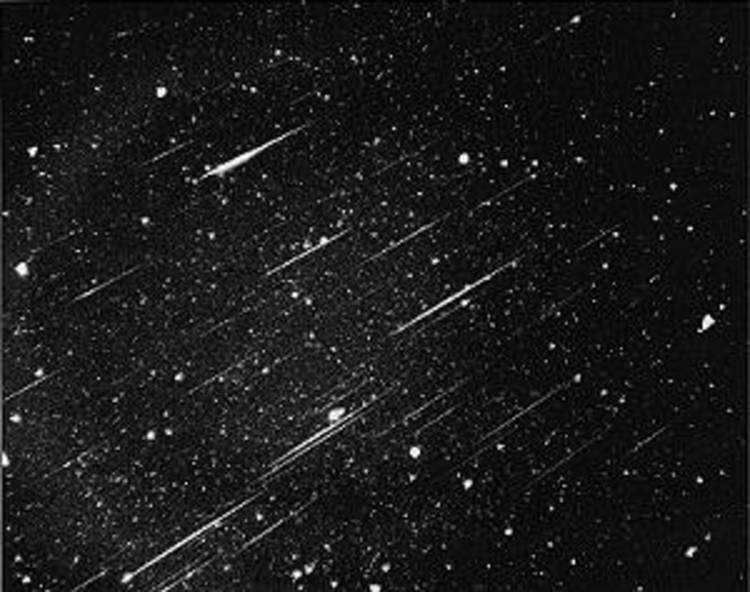
The Quadrantid meteor shower is located near the Volopas Delta and can be seen from January 1 to January 6. It reaches its peak on January 4 and produces approximately forty meteors per hour.
Which celestial objects can be found within the Volopassus constellation?
Although the region is impressive, it does not contain any Messier objects. However, it does encompass the more intriguing Bootes supergroup, often referred to as the bots of the Great Void. In reality, the term “void” does not mean completely empty but rather signifies a small number of galaxies (approximately 60).
Additionally, the dwarf galaxy Bootes I can be found within this constellation. It has a spheroidal shape and is very faint and dim. Despite the fact that it is obscured by the darkness of the Milky Way, it was not discovered until 2006.
Another noteworthy celestial object within the constellation is the globular cluster NGC 5466. Recently, a Tidal Stream, an elongated line of stars, was also discovered.
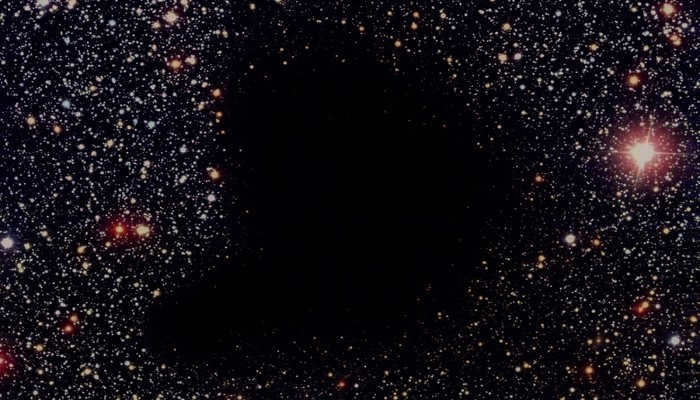
Empty Boots
Surprisingly, the six primary stars in the region create a rather large kite pattern. It is also referred to as the Eskimo or parachute kite. Another group of stars that can be seen in the area is the trapezoidal pattern. It is believed that this name was given due to the shape of the irregular quadrilateral.
By the way, this constellation is known for its meteor showers: the January Butides, the June Butides, and the Quadrantids.
It’s worth mentioning that in 2015, two previously unknown galaxies, EGS-zs8-1 and Egsy8p7, were discovered within this constellation. Scientists believe that these are the farthest spectroscopic systems from us.
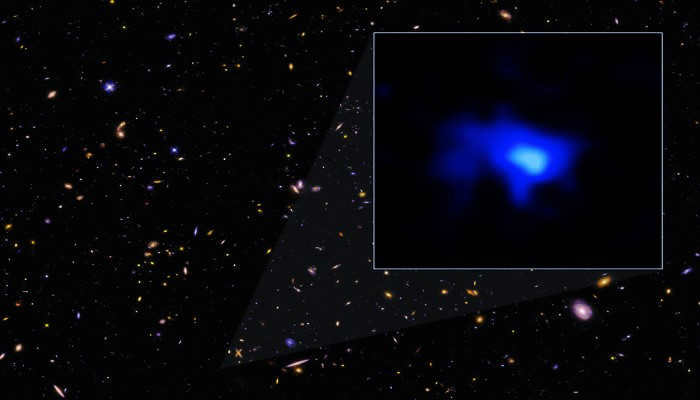
The constellation EGS-zs8-1 is known as the galaxy Galactica EGS-zs8-1.
Background
The true meaning behind the Greek name οώτης remains a mystery, but some believe it could be a combination of the words οῦς, meaning “bull,” and ὡθεῖν, meaning “charioteer.” The name Volopassus is associated with the ancient interpretation of the Big Dipper, resembling either a bull (hence one of the constellation’s ancient names) or a cart pulled by oxen.
Another interpretation, which may be even more precise, originates from the Greek term οητής, meaning “yelling”, possibly indicating someone shouting to their dogs, as proposed by Jan Hevelius, but more likely referring to the oxen in the herd. This alternative led to various Latin designations for the constellation: Vociferator, Vociferans, Clamans, Clamator, Plorans, all of which signify “loud”, “yelling”, “shouting”, etc.
The alternative Greek name for the constellation is Ἀρκτοφύλαξ (or Ἀρκτοῦρος), which translates to Arctophylax in English. This name is often used in Russian and refers to the Guardian of the Bears. It specifically represents the Big and Little Bears. The name Arthur was derived from Arctophylax and is used to refer to the main star of the constellation. For Aratus and Eudoxus, Arctophylax is the name of the constellation, while Arturo is the name given to the star. Latin versions of this name include Custos, Custos Arcti (Keeper of the Bear), and Ovid even mentions Custos Erymanthidos Ursae – Keeper of the Erymanthian Bear, similar to Callisto of Erymanthus in Arcadia.
Which of the two Greek names, Bootis-Bootes or Arctophylax-Arcturus, has a longer history? This question is up for debate. According to Hyginus, Bootes is older based on Homer’s texts. Some contemporary scholars argue that “bears” represents an ancient hunting symbol, while “bulls” has a more recent agricultural connotation. I personally believe that the primary star of the constellation, known as the furnace, holds the key. It is likely that the formation of the constellation began with this star, making Arctophylax the first name.
Interestingly, both names have been used interchangeably throughout the history of astronomy, up until the adoption of official constellation names.
In Latin, there have been strange and mythical forms created by combining these two naming approaches: Portitor Ursae (Bearer of the Bear) and, in contrast, Plaustri Custos (Guardian of the Cart) and, in Lalande, Custos Boum (Guardian of the Oxen). This also includes the questionable origin of Bubulus, Bubulcus, Bubulcus coelestis (Sennenhund, Celestial Hillbilly).
The Latins also referred to the constellation Lycaon as Arcadus, the Hunter of the Bear (Venator Ursae) and Philomel, based on the corresponding myths described in the mythology section above, Serpentine because of its proximity to the Big Dipper and its Bucket (Septentrio – “seven stars”) and even Atlas because, being close to the pole, “keeps the peace”. In the latter case, it is not a mythological connection, but rather a poetic fantasy.
An unexpected “wine” theme intertwined with the legend of Icaria. The pastinator is a unique agricultural product, unattainable in our northern Palestine due to climatic conditions: he is a person who tills the soil in a vineyard. Commentators refer to him as an associative vintager, a “cultivator,” although they are not exactly the same. The mythological connection lies in Icarius – the Latins also referred to the constellation by this name. There is an eclectic bouquet of Icaria – Icaria’s oxen: Icarius employed them to transport wine barrels to the nearby villages. Let’s not forget the Latin vine (Vine) as well.
There were multiple names assigned to the stars over time: Alcalurops (now μ Bootes), known in Arabic as Hāriss as-Samā’ – Guardian of the Heavens (α Bootes, Arcturus). Al-Khamil Luzz, Ulan, was later Latinized as Al Cameluz, Colanza, and Azimet Colanza (also α Bootes). The Arabic transcription of the main star, Arthur’s, gave rise to the variations Caeginus, Seginus, Chegninus, and Chegius.
The primary celestial bodies
Let’s delve into more detail about the celestial bodies that constitute the Bootes constellation.
The Alpha star is an enormous orange celestial body with a unique light spectrum and emission lines. It is situated over thirty-six light years away from our planet. Its luminosity is one hundred and ten times that of the sun. The star moves at a speed of one hundred and twenty-two km/s relative to our Sun. It will reach its closest point to the Sun in four thousand years. This particular star is the third brightest one in existence and the brightest in the northern hemisphere. Its apparent magnitude is -0.04.
Arcturus, also known as the “guardian bear” in ancient Greek, is the third brightest star visible in the night sky, following Alpha Centauri A. It can be found on the left leg of Boötes, near the constellations of Ursa Major and Ursa Minor.
Alpha is a component of the regional interstellar cloud. Currently, the Earth and Sun are traversing through it. The cloud spans a diameter of 30 light-years. Arturo serves as the longstanding celestial body of reference. Its trajectory is closely linked with 52 other ancient stars within the disk that comprises the Arcturus Stream.
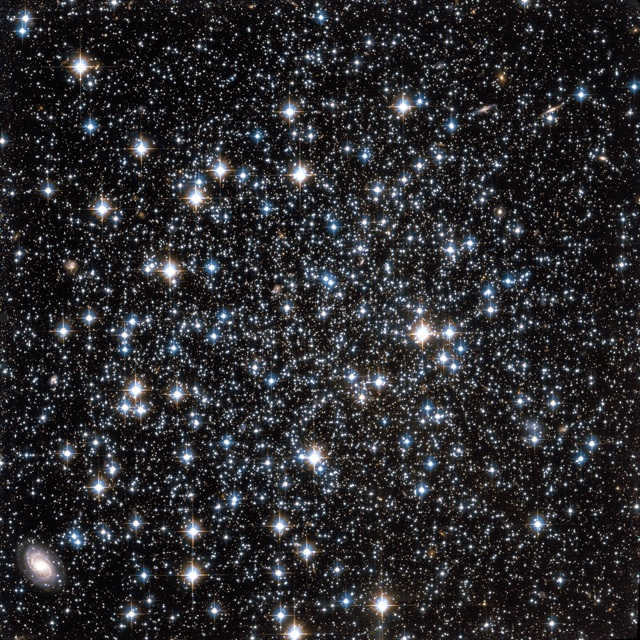
NGC 5466 can be found in the constellation of Bute
The yellow G-type star known as Betta is situated approximately two hundred and nineteen light-years away from Earth. It has a periodic blinking pattern, causing its brightness to fluctuate. Originally, the star’s name was translated from Arabic as “shepherd”, but due to a slight mistake, it became “Nekkar”. On occasion, you may come across the star being referred to as “Meres”.
The gamma star is a variable star in the Shield constellation. Its brightness varies due to pulsations on its surface, both radial and non-radial. Located eighty-five light years away, it has a size range of 3.02-3.07 and a period of 6.97 hours. This star belongs to the spectral class A7III.
The double star Epsilon is situated at a distance of three hundred light years. It is an impressive orange giant, accompanied by a smaller and less bright main-sequence star. Occasionally, it is referred to as Pulherrim, which translates to “beautiful.” Moreover, it is commonly known as Izar, meaning “veil” in Arabic. Other names associated with this star include Mirak and Mizar.
This particular star is a binary system with a period of four hundred and ninety-four days. It is in close proximity to Arturo.
The Mu star is a triple star located approximately one hundred and twenty-one light-years away from our planet. The primary component shines brightly with a yellow-white hue and belongs to the F-type subgiant category, exhibiting an apparent visual magnitude of 4.31.
Located one hundred and fifty-three light-years away, 38 Volopasa belongs to the F7IVw spectral class. Its name originates from the Arabic expression meaning “chained woman.” Its apparent size is recorded as 5.74.
Legend
The mythological tale of Volopassus tells the story of a youthful figure accompanied by a pair of hunting canines and wielding a club. Positioned in the celestial sphere near the handle of the Big Dipper, this constellation is associated with various narratives that depict the image of Boots. According to one account, Boots was a farmer who herded bulls alongside the constellation Ursa Major. His faithful hounds, Asterion and Chara, were always by his side, diligently chasing after him. In order to ensure the uninterrupted rotation of the sky, Boots fastened the bulls to the celestial pole.
Another popular interpretation of Boots portrays him as the offspring of Zeus and Callisto, known as Arcas. Raised by his grandfather Lycaon, the king of Arcadia, Arcas faced a perilous fate when his grandfather decided to test the gods by cooking him for a meal. Thankfully, Zeus intervened and transformed Lycaon into a wolf, while also resurrecting Arcas and saving him from his cruel fate.
However, the tale of the constellation does not conclude there. Hera, the wife of Zeus, became enraged with her husband due to his unfaithfulness and transformed Callisto into a bear. For many years, Callisto roamed the forest until she encountered her son, Arkas. Unaware of his mother’s identity, Arkas began hunting her. Seeking refuge, Callisto sought shelter within a temple that was inaccessible to her. In order to assist them, Zeus decided to elevate them to the heavens in the form of the Big Dipper and the Booth.
There exists another legend connected to Icarius. He possessed vineyards and one day summoned Dionysus to visit him. The god was so taken aback that he divulged the secret of winemaking to Icarius. Icarius adored the libation so much that he invited all his friends to partake. However, the following morning, they mistook their hangovers for an attempted poisoning and, consumed by fury, killed the slumbering Icarius. Grieved by this tragedy, Dionysus sent his companion to the celestial realm.
The constellation of Volopassus is home to a collection of triple stars, including the Zetas. The first two components, A and B, are nearly identical in size and shine with a brightness 38 times greater than that of the Sun. On the other hand, the Zeta Botes star system is a rather faint celestial object, which may explain its lack of a historical name.
The third component remains a mystery in the vast universe. All that is known is that it orbits the aforementioned pair, as is typical in triple systems, and has a magnitude of +10.9.
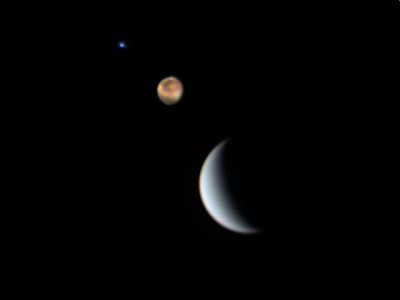
The constellation Capricornus in the night sky
During the spring and summer seasons, the constellation Capricornus is easily visible. It is situated at a significant height, near the prominent Big Dipper, and can be observed throughout the year in Russia. While this holds true for the spring, the optimal conditions for observing it occur when the constellation is already well-positioned in the evening. However, it is also visible in the winter, albeit not near the horizon, but rather closer to the morning.

Arcturus in the sky is a helpful guide for locating the Volopassus constellation, which is one of the brightest star formations in the Northern Hemisphere. Its vibrant orange hue sets it apart from other stars, making it easily distinguishable.
Location in the Celestial Sphere
Spotting Bootes in the night sky is a breeze even without the aid of a telescope. This constellation can be found to the south of the well-known Big Dipper. If you follow the stars of the Big Dipper, you’ll find Bootes’ primary star, Arthur, situated towards the east of the constellation Virgo.
During the spring season, when Bootes is most visible, you can easily locate it by using the Little Dipper as a guide. Bootes is positioned directly below the Little Dipper. To navigate your way through this constellation, keep an eye out for the distinct orange hue emitted by Arthur’s star.
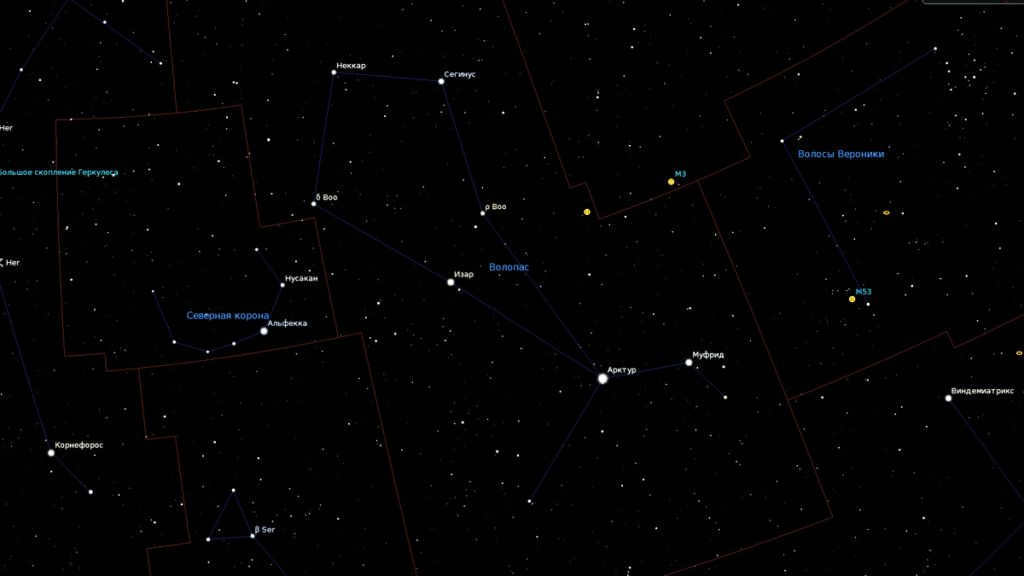
Constellation Bootes (illustration from an open source)
Orange Giant
Arcturus is not just the most brilliant star in the Bootes constellation, but it also holds the leading position in terms of brightness in the entire Northern Hemisphere. In our country, it is particularly noticeable during the spring season. Arcturus remains relatively high above the horizon in the southern part of the sky until mid-summer. During the autumn, it gradually moves towards the western direction, getting closer to the horizon.
The most radiant star in the Bootes constellation is an orange giant, shining 110 times brighter than the Sun. The star’s surface pulsates constantly, causing its brightness to fluctuate by 0.04 magnitudes every eight days for a few days. These unique characteristics qualify Arcturus as a variable star.
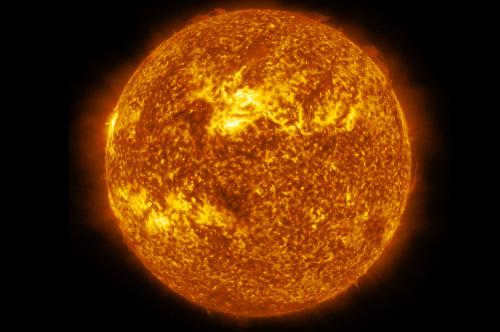
Facts
An irregular quadrilateral known as a trapezoidal asterism is formed by the four most luminous stars in the constellation (Alpha, Gamma, Delta, and Rho).
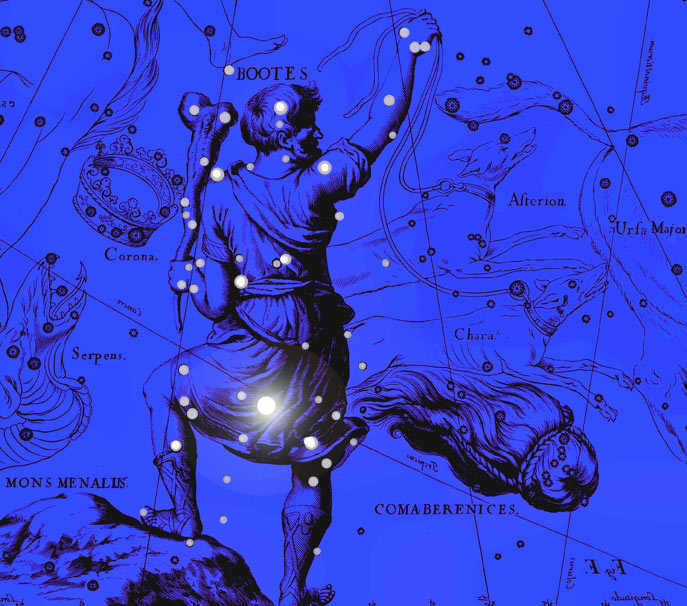
The constellation Volopas bears a resemblance to a shepherd accompanied by two dogs, which is the origin of its name.
Bootes (open source illustration)
In the year 2015, two galaxies were discovered within the constellation Bootes, located at the farthest distance from Earth. The light emitted by these galaxies has traveled for over 13 billion years to reach our planet.
The Volopassus constellation covers an area of 907 solid angular units.
Volopassus has given rise to three major meteor showers:
The Butides meteor shower can be observed in January and June, aligning with its name. The Quadrantids meteor shower is observed annually from December 28 to January 7.
The most active phase of this meteor shower occurs on January 3 and 4, during which up to 200 meteors can be seen per hour.
Don’t mix up a meteor shower and a meteor shower. In the former scenario, meteors combust in the atmosphere, while in the latter, meteorites descend onto the Earth’s surface.
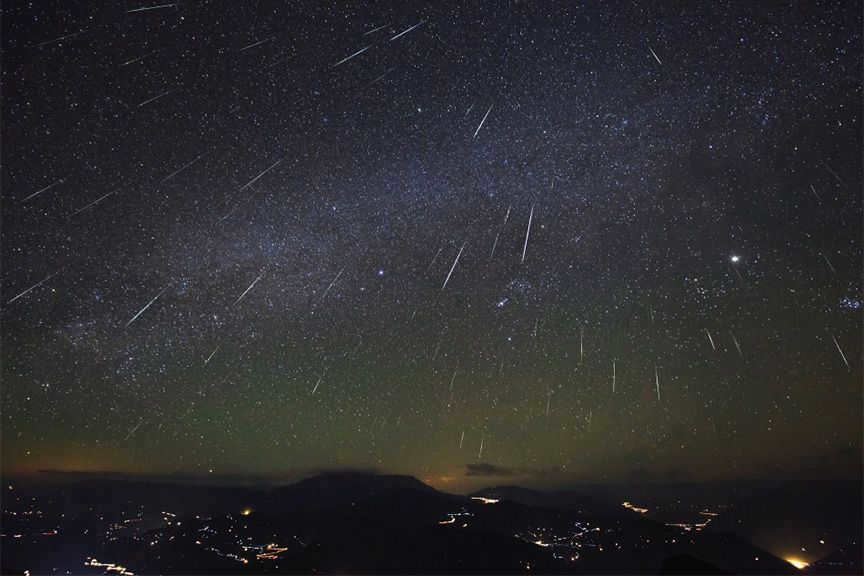
Meteor showers (photo sourced from open archives)
The primary celestial bodies
Let’s closely examine the celestial bodies within the constellation Bute, including thorough descriptions and characteristics accompanied by visual representations.
Arturo (Alpha Volopassus) is categorized as an orange giant of type K1.5 IIIpe (exhibiting an uncommon light spectrum and the presence of emission lines). It is located at a distance of 36.7 light-years, with a luminosity 110 times greater than that of the Sun. Its speed relative to the solar system is 122 kilometers per second. It is predicted to have its closest approach to the Sun in approximately 4,000 years.
It is the third brightest star visible in the sky and the most luminous in the Northern Hemisphere. Its apparent visual magnitude is -0.04. On occasion, it may be ranked as the fourth brightest after Alpha Centauri due to its status as a binary star with a combined magnitude of -0.27.
There is no issue with identifying it if you trace the path of the three luminous stars that make up the handle of the asterism in the Big Dipper. It is a component of the Local Interstellar Cloud (which the Earth and the solar system are currently traversing) and has a diameter of 30 light-years. Arturo is a reference to an aged star found in the disk. It appears to be moving alongside a cluster of 52 other mature stars in the disk, collectively known as the Arcturus Stream.
Neckar (Beta Volopassus) is a yellow giant of the G-type and is located 219 light-years away from us. It is a variable star that exhibits fluctuations in brightness over a span of several minutes. The name “Nekkar” was derived from a transliteration mistake of the Arabic term for “cattle drover”. This star is sometimes also referred to as Meres.
Seginus (Gamma Bootes) is a star in the delta Shield constellation that undergoes variations in brightness due to pulsations on its surface. It is located approximately 85 light-years away from Earth. Its brightness ranges from 3.02 to 3.07, and it has a period of 6.97 hours. Seginus belongs to the spectral class A7III.
Isar (Epsilon Bootes) is a binary star system located around 300 light years away from us. It consists of a bright orange giant star and a smaller, dimmer main-sequence star. It is sometimes referred to as Pulcherrima, which means “beautiful” in Latin. The other name Izar comes from Arabic and translates to “covering”. It is also known by the traditional names Mirak (meaning “loincloth” in Arabic) and Mizar."
Mufrid (Eta Bootes) is a binary star system that has a period of 494 days. Mufrid is situated in close proximity to Arturo, which is located approximately 3.24 light-years away from us. The name Mufrid is derived from an Arabic phrase that means “a star far away from a man with a spear”. Mufrid is also referred to as Saak. It is situated at a distance of 37 light-years from our position. Mufrid belongs to the spectral class G0 IV. Additionally, it displays an observable abundance of elements that are heavier than hydrogen.
Alcalurops (Mu Bootes) is a triple star system that is situated at a distance of 121 light-years from us. The most prominent component of Alcalurops is a yellow-white subgiant of the F-type, which has an apparent visual magnitude of 4.31. Alcalurops is accompanied by a binary star system that is located at an angular separation of 108 seconds. The name Alcalurops is derived from the Greek word “kalaurops”, which translates to “shepherd’s stick”.
Merga (38 Magi) – is a star of the spectral class F7IVw and is located 153 light-years away. The name is derived from the Arabic phrase meaning “restricted woman”. Its visible magnitude is 5.74.
Nadlat (Psi Bootes) is an orange giant of the K-type, situated 250 light-years from us. It has a visible magnitude of 4.52.
Τ Volopassus (Tau Bootes) is a binary star system located 51 light-years away. It consists of a yellow-white dwarf and a faint red dwarf. The primary star in this system is known to have an exoplanet, which was discovered in 1996 and confirmed in 1999.
Stars in the Capricorn Constellation
Within the Capricorn constellation, numerous stars can be found, with one particularly shining star creating a prominent asterism. Situated just below this asterism is Arthur, the alpha star of the neighboring Boot constellation.
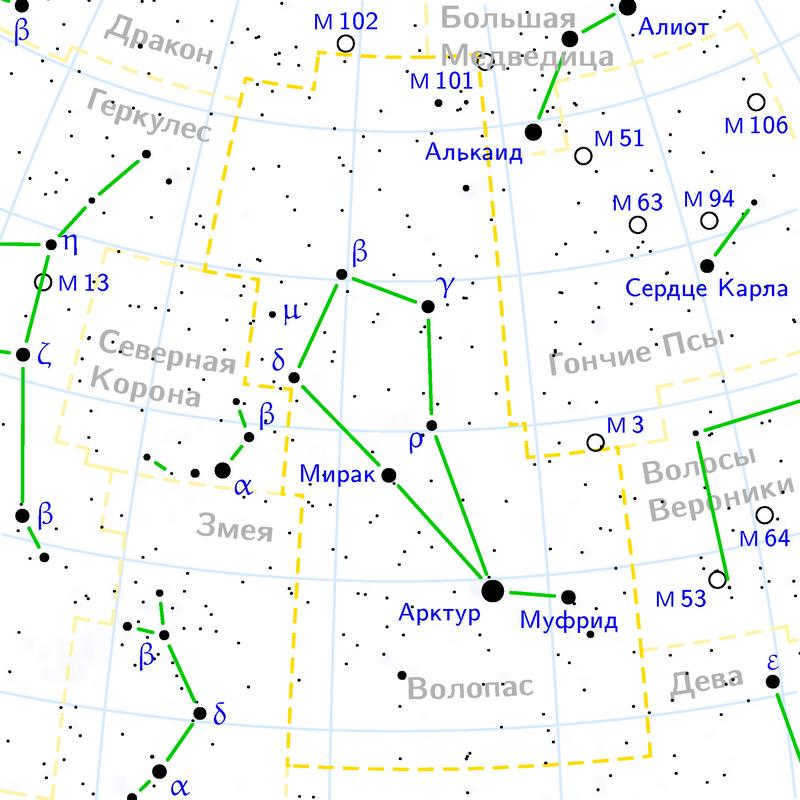
Arcturus, the brightest star in the Bootes constellation
This giant star, known as an orange giant, has a mass that is equivalent to that of the Sun. However, it is 25 times larger and 110 times brighter than our own star. Arcturus is located at a distance of 36 light years and has a brightness of -0.05 meters. If the alpha star of the Bootes constellation were at the center of our solar system, the Earth would be scorched like the Moon.
When you gaze upon Arcturus, you are actually observing the future of our Sun. In a few billion years, the Sun will also evolve into a similar giant. Arcturus, being an older star, is simply further along in its evolutionary process. Scientists estimate that Arcturus is around 7-8 billion years old, whereas our Sun is only about 4.5 billion years old.
There is a hypothesis that our very own Milky Way once devoured another small galaxy, and the stars of the Arcturus stream were once part of it. They stand out from the rest in the same region of space, indicating a distinct origin.
Binary systems
The constellation Volopassus consists of 149 stars that can be seen with the naked eye, and Arcturus is not the only noteworthy object among them. Isar (epsilon), Mufrid (eta), and Seginus (gamma) are also remarkable for their brightness. What’s more, they are all binary star systems.
Izar or Itzar (derived from the Arabic word for “loincloth”) is a system that consists of a bright orange giant and a white star from the main sequence. The distance between them is 185 astronomical units, and their orbital period exceeds a thousand years.
Mufrid is the nearest neighbor of Arthur (a diagram of the Bute constellation is displayed below). One of the components of this system has a similar color and surface temperature to the Sun, but it does not belong to the yellow giant category. Transitioning through the life stage is characterized as an intermediate phase on the path to becoming a red giant. Its companion is less remarkable in terms of its characteristics. It is a red dwarf in the main phase.
Seginus resides on Bot’s shoulder and is also made up of two luminaries. This includes variable stars like Delta Shield, whose brightness fluctuates every few hours due to surface undulations.
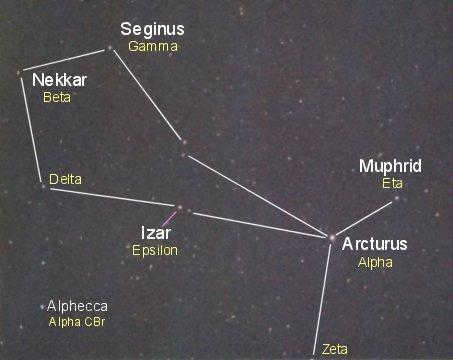
An extraterrestrial visitor
Arturo is estimated to be slightly more than seven billion years old. It is a member of the group of stars that compose the Arcturus stream, 52 celestial bodies moving at nearly the same velocity in the same direction. Certain characteristics of these cosmic entities lead scientists to deduce that they were formerly part of a different galaxy encompassed by our Milky Way. Consequently, when an observer on Earth studies Arcturus, they are simultaneously observing one of the oldest stars in existence and an extraterrestrial entity from another galactic system.
44
In the constellation, there is another fascinating triple object. It goes by the name of 44 Boote. This system contains a dense pair of stars that are so close together that their surfaces touch. The stars, 44 Bootes B and 44 Bootes C, orbit each other in just three hours, with a distance of slightly over a million kilometers between them. In the grand scheme of space, these values are minuscule. Due to their proximity, the stars constantly exchange material and create an unstable system that frequently produces powerful explosions.
The B component of the system has a mass and radius similar to that of the Sun, classifying it as a G2 V star. On the other hand, 44 Bootes C is not as well-studied. It has a smaller luminosity and mass compared to the B component, and its diameter is 40% smaller than that of the Sun. This makes it a yellow dwarf star.
44 Bootes A bears a striking resemblance to our own star. Its radius and brightness nearly match those of the Sun. The distance between this component of the triple system and the VS pair is constantly changing, as its orbit takes the shape of an elongated oval. On average, this distance measures 48.5 astronomical units.
Volopassus is a constellation located in the northern hemisphere of the sky. It ranks 13th in terms of size among all 88 constellations, covering an area of 907 square degrees on the celestial sphere. The constellation is visible from latitudes ranging from +90° to -34°. The best time for observation in Belarus, Russia, and Ukraine is during the months of April and May, although it can also be easily spotted in the summer months when looking up at the starry sky.
Essential details
Most luminous celestial bodies
(highest stellar brightness.
Employ the primary mouse button to simulate parallax displacement.
Employ the mouse scroll wheel while holding down the Shift key to simulate personal movement; Alt accelerates the procedure.
Entities
Stars for Navigation
Mythology
Arcade Games
This Arcade is the son of the nymph Callisto and, interestingly enough, the namesake of Arcadia. He mistakenly hunted (or nearly hunted) Callisto’s mother, who was Zeus’ beloved and was transformed into a bear by the gods – either by Hera out of jealousy, or by Artemis out of disgust, or by Zeus out of fear of being exposed. In a different group of constellations, we also have the Hound Dogs – the hunting dogs of Arkad, but they were added to the sky much later, in the 17th century by Jan Hevelius. It’s worth noting that Hevelius depicted Volopas-Arcadus standing on the newly introduced constellation of Mount Menalus, which is located in Arcadia. This shows the mythological accuracy of the astronomer.
As a related interpretation, we can consider the constellation as representing Lycaon, who is the father of Callisto.
Icarius.
In another version of the story, we are introduced to the legend of Icarius, the renowned wine-maker, and his daughter Erigone. Icarius was credited as being the first person to master the art of winemaking. After receiving a special gift from Dionysus consisting of furs, wine, and grapes, he loaded up his wagon and embarked on a journey throughout Attica, sharing his knowledge and treating those who were interested in learning about the craft of winemaking. One day, while treating the shepherds of Marathon, he unintentionally got them extremely intoxicated, causing their vision to become blurry. Believing that they had fallen under some sort of spell, the shepherds accused Icarius of bewitching them and tragically killed him. Filled with grief and despair, Erigone, guided by her faithful dog Icaria Mera (or Myra), found her father’s grave and ultimately took her own life, cursing those responsible for her father’s murder. Eventually, the murderers were identified and executed, following the guidance of the oracle at Delphi.
According to this interpretation, the constellation Capricorn represents Icarius, while the faithful dog and Erigone are represented by the constellations Little Dog and Virgo, respectively. Scholars believe that the connection between these constellations and the grape harvest is due to their heliacal rising during this time. In ancient times, the heliacal risings of various stars and their combinations were significant for calendar purposes, but this explanation is somewhat arbitrary.
Alternate Versions
Philomel, the inventive beggar who created the wagon and plow, is also a potential candidate for the original constellation, which was bestowed upon him by his mother, Demeter.
Alternatively, Triptolemus, the pioneering farmer, may have been commemorated in the heavens as a cowherd named Volopas for some unknown purpose.
Volopassus – is one of the oldest constellations. It is believed that the initial identification of the main star of the constellation, Arcturus, led to the gradual formation of the constellation around it. (It is worth noting that Arcturus is not included in the constellation in the much later “Almagest” of Ptolemy).
References to Volopassus can be found in the works of Homer and Hesiod.
Mythology provides us with the following story about the Wolf constellation. During the Copper Age, the people did not engage in agriculture, did not cultivate fruit trees or raise livestock. They were only focused on fighting, destroying each other, and engaging in criminal activities. They did not even respect or obey the gods of Olympus. As a result, Zeus, the ruler of the gods, harbored a deep hatred towards them. His anger was first directed towards Lycaon, the king of Arcadia, who ruled in Lykasura.
Once upon a time, Zeus arrived in Lykasura disguised as an ordinary person. However, before revealing his true identity, he gave a sign to the townspeople, who all kneeled and paid their respects to him. The only one who did not kneel before the mighty thunderer and show him any reverence was Lycaon. Lycaon’s arrogance knew no bounds, and in order to test whether Zeus was truly a god, he committed a heinous act: he slaughtered one of his many slaves, cooked one half of the body, and roasted the other half, then offered it to Zeus. His reasoning was that if the stranger was indeed a god, he would be aware that the meal was made from human flesh and would refuse to eat it.
Zeus was filled with anger and shock upon discovering Lycaon’s crime. He clenched his lightning-filled hands, causing a flash that swiftly transformed the palace into a pile of ashes. As punishment for his actions, Zeus cursed Lycaon to forever roam the earth as a bloodthirsty wolf. To serve as a warning to others, Zeus immortalized Lycaon as a constellation in the sky.
According to an alternate account of this tale, the monarch of Arcadia, Lycaon, murdered his own grandson, Arcadus, either in combat as an adult or even as an infant, and then served him as a dish at a banquet. Interestingly, Zeus had a connection to Arcadus as well – he was his father. Arcadus’ mother was the nymph Callisto, who would later transform into the constellation known as the Big Dipper. When Zeus discovered the horrifying truth of what had occurred, he flew into a furious rage, setting Lycaon’s dwelling ablaze, slaying all of his sons, and transforming him into a wolf as punishment for his cannibalistic act, and ultimately placing him in the heavens. However, Arkad (also known as Arkas) was brought back to life and went on to become the new ruler of Arcadia, a historical region located in the heart of Greece, and a key figure in various other legends. In the celestial sphere, Arkad is recognized as Volopassus (initially, only the star Arcturus was associated with him, but over time, the myth expanded to encompass the entire constellation).
It is considered one of the most visually stunning constellations in the northern hemisphere. This ancient constellation is featured in Claudius Ptolemy’s Almagest catalog of the starry sky.
The most luminous star within the constellation is Arcturus. Ranking as the third brightest star in the night sky, its name is derived from “arctos” meaning guardian and “ursus” meaning bear. “Guardian of the bear” directly aligns with the constellation Ursa Major as it traverses across the heavens.
According to ancient mythology, the constellation’s name is intertwined with the depiction of Earth’s first farmer, Triptolemus, who was the second son of the Eleusinian king Keleus and Metanira.
Demeter, the goddess of fertility and agriculture, made a promise to Keleus and Metanira to bestow upon Triptolemus the highest honor among mortals. It was Demeter who taught him the most vital of skills – the art of farming. With a single ear of wheat, a wooden plow, and a sickle in hand, the goddess instructed Triptolemus on the proper techniques of plowing the land, sowing the grains of wheat, and reaping the ripe crop with the sickle. The first field that Triptolemus sowed yielded an abundant harvest.
Following the wishes of the goddess, Triptolemus was chosen to share the secret of farming with humanity. To aid him in this task, Demeter gifted him a magnificent golden chariot, pulled by dragons, which he used to travel across the world, imparting his knowledge to farmers far and wide. The people revered Demeter for the wisdom she bestowed upon them in cultivating the land, and in return, she blessed them with bountiful fruits.
Thus, Demeter fulfilled her promise, and Triptolemus became the most revered of all mortals.
Once the initial plowman completed his training of the villagers, the gods elevated him to the heavens and transformed him into the celestial formation known as Volopas. He was bestowed with unwavering oxen, which became the brilliant stars within the constellation of the Big Dipper. With their assistance, he tirelessly plowed and cultivated the celestial realm. During ancient times, whenever the constellation of Volopas, the inaugural plowman, emerged in the eastern sky after midnight in early spring, people would start preparing for their agricultural endeavors.
There exists another ancient Greek myth. In a bygone era, King Lycaon reigned over Arcadia, and he had a daughter named Callisto, renowned throughout the world for her enchanting allure and exquisite beauty. Even Zeus, the supreme ruler of the heavens and the earth, was captivated by her divine beauty the instant he laid eyes upon her.
In secrecy, Zeus would frequently visit Callisto in her father’s palace, all the while hiding it from his jealous wife, the powerful goddess Hera. During one of these encounters, Callisto became pregnant and gave birth to a son named Arcades. As he grew up, Arcades developed into a slender and handsome young man. He was particularly skilled in archery and would often venture into the forest for hunting expeditions.
Hera discovered the love affair between Zeus and Callisto. Filled with anger, she transformed Callisto into a hideous bear. When Arcadus returned home after his hunting trip, he found the bear inside. Unaware that it was his own mother, he prepared to shoot his bow… However, Zeus intervened to prevent Arcadus from unknowingly committing a terrible crime. Just as Arcadus was about to release the arrow, Zeus grabbed the bear by its tail and swiftly carried her into the heavens, where he transformed her into the constellation known as the Big Dipper. During the journey, the bear’s tail began to elongate, resulting in the Big Dipper’s distinctive long and curved tail in the night sky.
Wolopas will forever hold dear his mother, the Great Bear. As a result, he tightly grips the reins of the Canis Major, who are seething with anger and poised to attack the Great Bear and rip her apart.
The constellation Andromeda’s Tresses is a constellation in the northern hemisphere of the sky. It became its own separate constellation in the 3rd century BC during the reign of the Egyptian king Ptolemy III Evergetes. According to the writings of Claudius Ptolemy, it was previously considered only a part of the constellation Leo. Eratosthenes, on the other hand, referred to Andromeda’s Tresses as “Ariadne’s hair” and also regarded it as part of the Leo constellation.
Veronica’s hair is a unique constellation that is named after a historical figure. The story of this constellation continues to captivate people with its depiction of deep love and loyalty.
In ancient times, during the 3rd century BC, there was a pharaoh in Egypt named Ptolemy III Everget. His wife, Veronica, was renowned for her exceptional beauty.
Her hair was especially stunning. It resembled a flowing river of gold and brought indescribable joy to anyone fortunate enough to lay eyes upon it. Kings, emperors, and priests from the farthest corners of the earth traveled to witness this marvel. Poets composed lyrical verses praising Veronica’s hair and her unmatched beauty. Pharaoh Ptolemy’s heart overflowed with happiness, and he could not tear his gaze away from Veronica’s magnificent locks. However, his bliss was short-lived. Ptolemy was compelled to march into battle with his army, leaving Veronica behind.
Days turned into months, and months turned into years, but Ptolemy never returned. Overwhelmed with grief, Veronica sought solace in the temple of Aphrodite, where she fervently beseeched the goddess to protect her husband, grant him victory, and hasten his safe return. In exchange, Veronica vowed to sacrifice her beautiful hair to the goddess.
Shortly after, a messenger came to the palace and delivered the joyful news to Veronica that Ptolemy had emerged victorious and would soon be returning home.
Remaining true to her promise, Veronica wasted no time in making her way to the temple of Aphrodite, where she took a pair of scissors to her hair and reverently placed the shorn locks on the altar.
The ninth constellation in alphabetical order is Volopassus. In this article, we will discuss this constellation.
Legend and History
The shape of the constellation resembles a folded fan. The brightest star at the base is Arcturus, which is the fourth brightest star in the sky. Arcturus is known as the “keeper of the bear.” The constellation Volopassus is named after Arcadus, the son of Callisto and Zeus.
According to another legend, Volopassus is the first man to use an ox to work the land, making agricultural work easier for people. As a reward for his help, the gods placed him in the heavens.
According to a different Greek myth, the Volopassus was a vintner whom the god Dionysus instructed in the art of winemaking. However, Dionysus’ companions did not enjoy the wine and ended up murdering the vintner. The Volopassus’ faithful dog brought his daughter Erigona to his lifeless body, but she tragically took her own life out of grief. Overwhelmed by sorrow, the dog also perished. In response, Zeus transformed the deceased individuals into constellations: the Volopassus became a constellation, Erigona became the constellation Virgo, and the dog became either the Big Dog or the Small Dog, depending on the account.
It proves challenging to find complete consensus among these myths as they often contradict one another. One must either recount all of them or select the most captivating story, in my opinion.
Distinctive Features
With a celestial expanse of 907 square degrees, the Volopassus constellation ranks 13th in size among the 88 constellations. It can be easily observed in latitudes ranging from +90° to -34°. For those in Belarus, Russia, and Ukraine, the optimal time for observation is during the months of April and May. However, it remains visible in the starry sky even during the summer months.
Within the Volopassus constellation, there are three prominent stars with a magnitude of less than 3. These stars are Arcturus (-0.05 m), Isar (2.50 m), and Mufrid (2.65 m).
When navigating the night sky, neighboring constellations to look out for are Hound Dogs, Veronica’s Hair, Northern Crown, Dragon, Hercules, Snake, and Virgo.
In reference books, the abbreviation for Volopas is Boo, while its full Latin name is Bootes.
The most remarkable and captivating entities to observe in the Volopassus constellation
Getting oriented in the celestial expanse – the Volopassus constellation
One would think that a constellation of such magnitude (ranking 13th) would be teeming with nebulae, galaxies, and star clusters. However, this is not the case. Numerous sources about the Volopassus constellation barely make any mention of observable objects, besides multiple stars. I have endeavored to uncover more intriguing and noteworthy entities for observation, and now I am delighted to share my discoveries with you.
1. α (alpha) of Volopassus – Arcturus
Arcturus in comparison to the Sun
Arcturus is categorized as an orange star with a spectral class of K2. It is 23 times larger than our Sun and located at a distance of 36 light years.
2. κ (kappa) of Volopasa
Kappa is a binary star system composed of an A8 giant star with a magnitude of 4.5 and an F1 class star with a magnitude of 6.7.
A binary star system composed of a G1 class star with a luminosity of 6.5 m and an F0 class star with a luminosity of 4.3 m orbits around each other every 224 years.
4. π (pi) Volopasa.
Another pair of stars in the constellation is π Volopasa, a binary star system consisting of stars with luminosities of 4.9 m and 5.8 m.
We have encountered multiple binary star systems. I mentioned earlier that Volopasa is rich in double stars. Now, let’s explore two more fascinating objects that can be observed through a telescope.
5. NGC 5248 Spiral Galaxy (C 45).
This particular galaxy belongs to the SBb classification. Its apparent stellar magnitude is 10.2 m . To be completely honest, it can be quite challenging to observe this object. To locate it in the night sky, you will require an advanced telescope with a lens diameter of 150-200 mm. Positioned near the border of the Virgo constellation, the galaxy lacks prominent nearby stars, which means you will need to create a navigation route that incorporates the most noticeable dim stars for easy identification and memorization. Below, I have highlighted two possible options (pairs of neighboring stars that can serve as reliable guides):
Gradually navigate from one pair of stars to another, gradually getting closer to the sought-after galaxy, which is NGC 5248. With practice, you will certainly be able to locate it.

